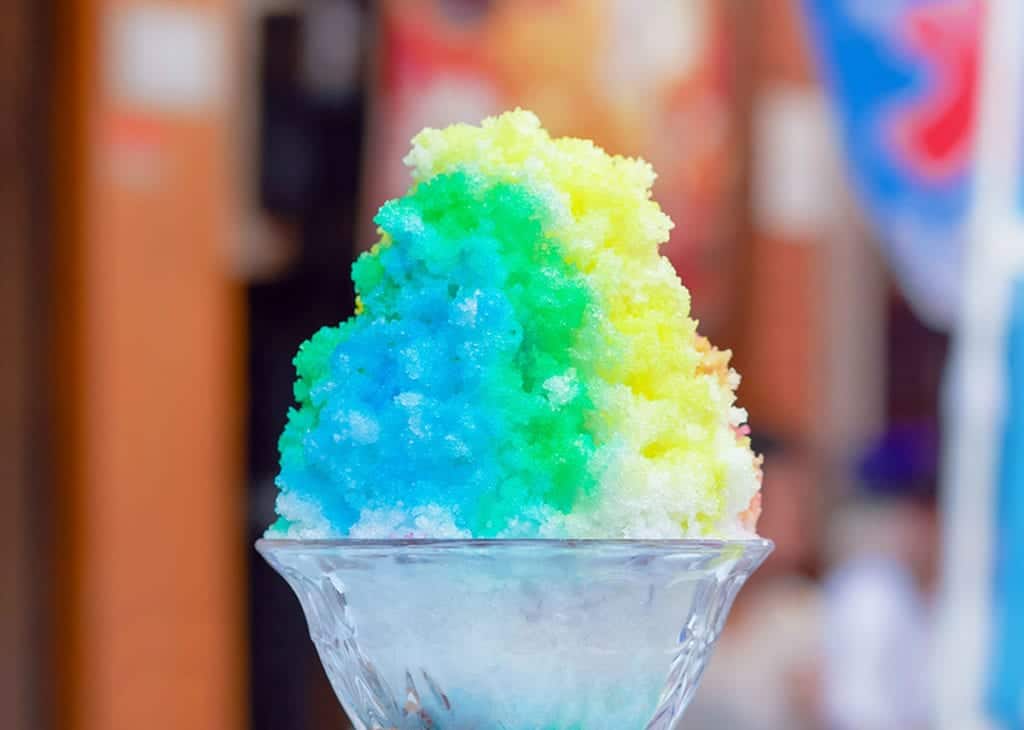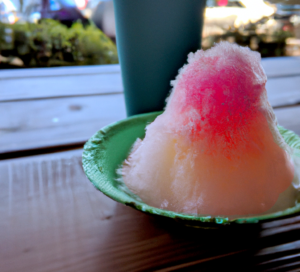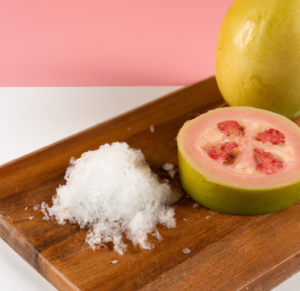“Dessert is like a feel-good song and the best ones make you dance.” — Chef Edward Lee
Nothing spells “happiness” better than a frozen dessert. A go-to stress reliever for both kids and kids at heart, nearly every country in the world has their own version of shaved ice.
The fine, snow-like shavings of ice that serve as the starting point for all the recipes here makes for an incredible blank canvas. From that starting point, each country puts their own spin on things with delectable toppings and syrups.
Travel lovers who are looking to sample the unique culinary landscapes of the world should be careful not ignore shave ice because of its humble simplicity. The ingredients may be simple, but often the best things are simple.
Unsurprisingly, it’s often the hottest, most humid parts of the globe that have the most love for shave ice. There’s just nothing else that can help you beat the heat like a big bowl of sweetened, shaved ice.
Next time you find yourself in one of these destinations, do yourself a favor and give one of these heaps of sweet shave ice goodness a try. And of course, if travel’s not an option for you at the moment, you can almost certainly find any ingredient you need on Amazon to try making these at home.
Japan’s Kakigori
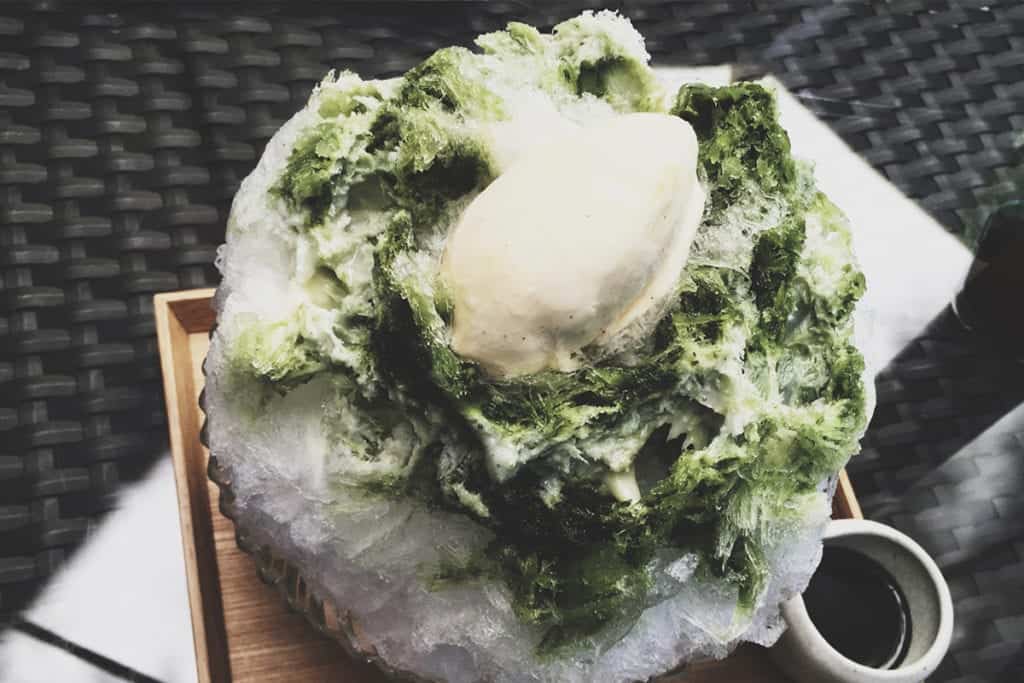
First off, we’ve got Japan’s famous of shave ice, kakigori. Kakigori played a part in Japan’s rich history as it was introduced and served to Japanese aristocrats back in the 10th century. As ice became more accessible due to progress in transportation, this flavorsome dessert became available to the public in the 1800’s.
The process of making a kakigori is simple: a manualy cranked or electric kakigori machine is used to produce thin shavings from rotating blocks of ice. Once the shaved ice is ready, it is pressed into a bowl and flavored with different kinds of syrup, which include, but are not limited to, matcha, melon, strawberry, cherry, lemon, and green tea. For those who like their desserts sweet and creamy, the kakigori can also be topped with syrup and evaporated or condensed milk.
Kakigori stands out in a sea of shaved ice variants because of its fluffy and smooth texture. The Japanese have truly made an art out of shaving ice, and this is evident in the tools they’ve crafted to make it. Most shave ice business owners will tell you that the best block shave ice machines are made in Japan.
Eaten with a spoon, this dessert is a favorite of locals and travelers alike because it is almost similar to fallen snow. Talk about heaven in a bowl, and there you have it.
The Philippines’ Halo-Halo

A trip to the Philippines isn’t complete by without sampling a tall frosty glass of halo-halo. A Filipino term meaning “mix-mix,” halo-halo is a colorful and elaborate shaved ice iteration that usually comes with an amazingly colorful assortment of toppings.
A few common additions include coconut milk or evaporated milk, leche flan (creamed caramel flan), nata de coco (coconut gel), red beans, toasted rice flakes, jackfruit, ripe banana, shredded coconut, sweet corn, tapioca pearls, sweet potato, and a scoop of vanilla or a purple yam ice cream.
Typically served in a clear tall glass, the proper way to indulge in a halo-halo experience is to stir all the ingredients together prior to eating. After all, that’s basically where this dessert gets its name. As the ice cream melts, it mixes with the shaved ice and the milk, making the dessert creamy and intensely flavorful.
Found almost in every restaurant, this traditional Filipino dessert is available all year-round, making it an important part of the local culture.
Italy’s Granita
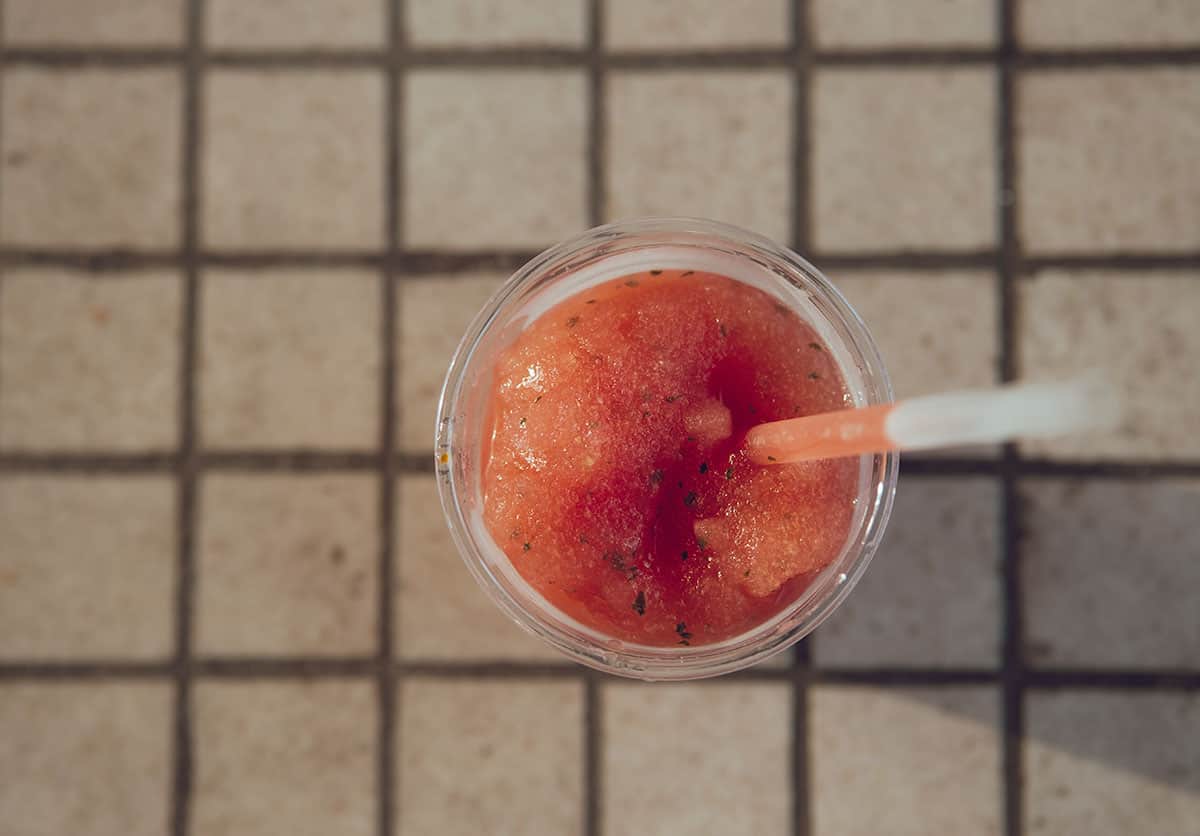
It’s impossible not to think of Italy once you crave for gelato, but if there is another dessert Italy is also known for, it’s granita. A frozen dessert that originated from Sicily, granita is distinct because of its unique preparation.
Instead of topping the shaved ice with syrup, the liquid is flavored with sugar, fruit juice or other flavorings before freezing. The granita is then occasionally agitated to develop a coarse, crystalline texture. Once frozen, it is shaved before being served in a glass or bowl.
The dessert’s texture depends on the freezing method. From sorbet-like smoothness to a chunkier variant, granita offers a more diverse texture as compared to other shaved ice desserts. Additionally, while some of the popular flavorings used for making granita include strawberry, lemon, and mulberry, it is also available in non-fruit variants like coffee, chocolate, almond, and pistachio.
China’s Bao Bing
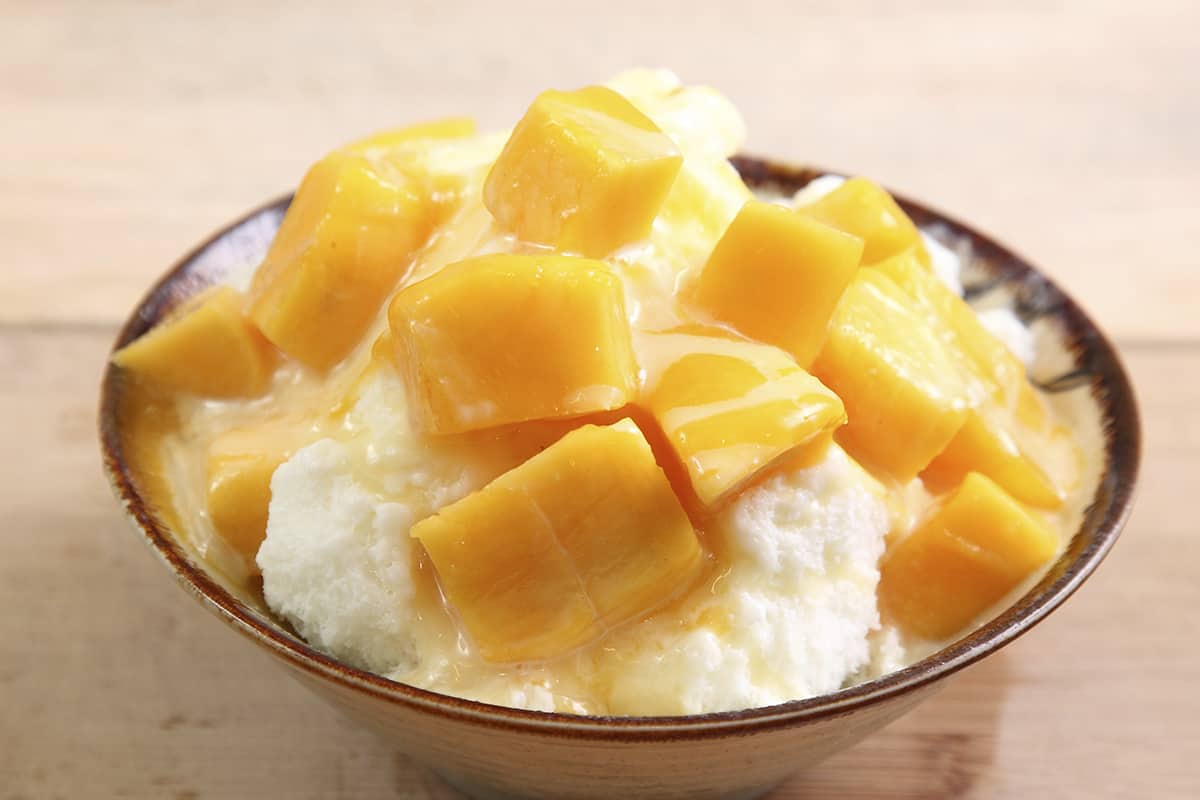
If there’s proof of shaved ice’s popularity (and staying power), it’s bao bing. After all, it’s rare to find a dessert that has survived for around 1,000 years. The first sighting of the bao bing dates back to the 7th century A.D., when it was served in China before it became a staple dessert in Southeast Asia. Soon after its migration to the Southeast, it became equally popular in America, where it has continuously evolved.
The traditional bao bing consists of snowy shaved ice topped with red beans and condensed milk. As the dessert rose to popularity, the toppings used for preparing bao bing grew in range. Depending on the region and country, bao bing can be served with lychee, coconut, mango, strawberry, mochi ball (sweet rice ball), chocolate, sesame soup, grass jelly, taro, and peanut. Americanized versions of this traditional Chinese dessert are served with gummy bears and Oreo cookies.
Mexico’s Raspado
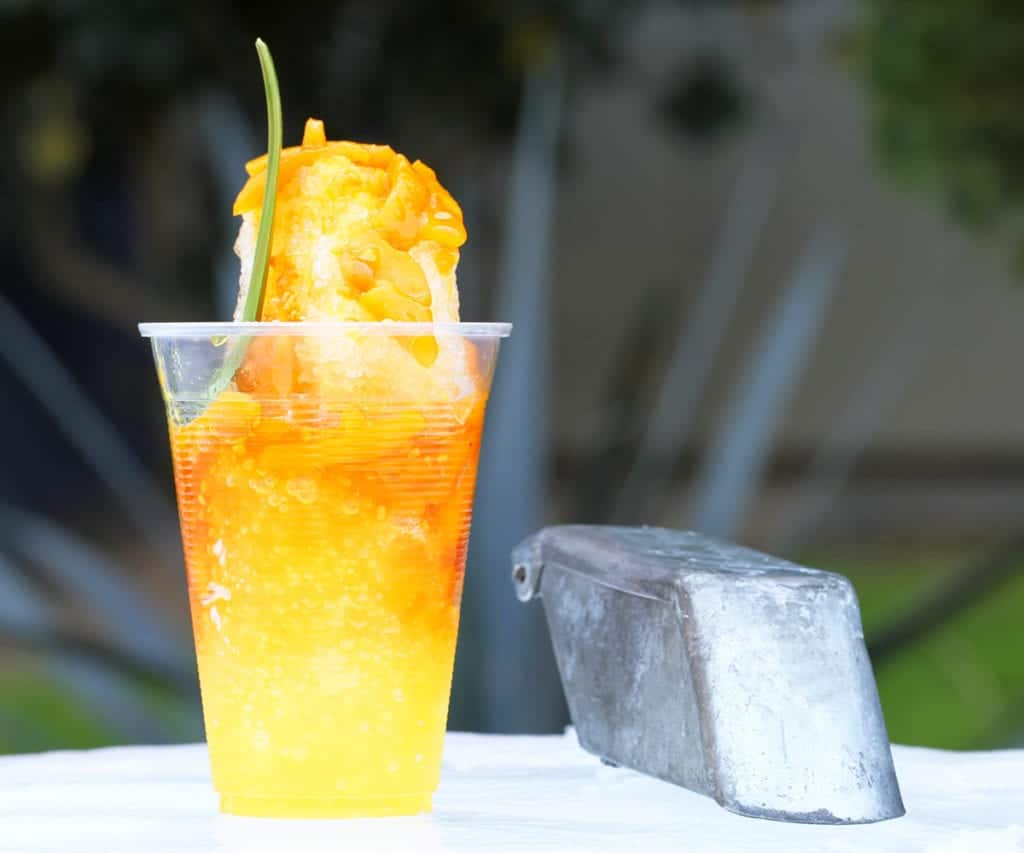
Mexico won’t back down when it comes to cold, sweet treats as they also have their very own version of America’s snow cone-the raspado. The term “raspado” is a Spanish word meaning “scrape”. Traditionally shaved or scraped by the use of a locally-made tool called “raspador,” raspado is a practical, delectable dessert that can effortlessly beat the summer heat.
Aside from more common fruit toppings such as mango and papaya, raspados are also sometimes topped with tamarind and eggnog.
Although it originated in Mexico, raspado is also popular in much of the American Southwest. One especially strange Southwest variation of the raspado is the Piccadilly raspa. It features dill pickles, chamoy sauce, chili salt, and sometimes much much more. Read more about the fascinating world of Picadilly snow cones here.
Hawaii’s Shave Ice
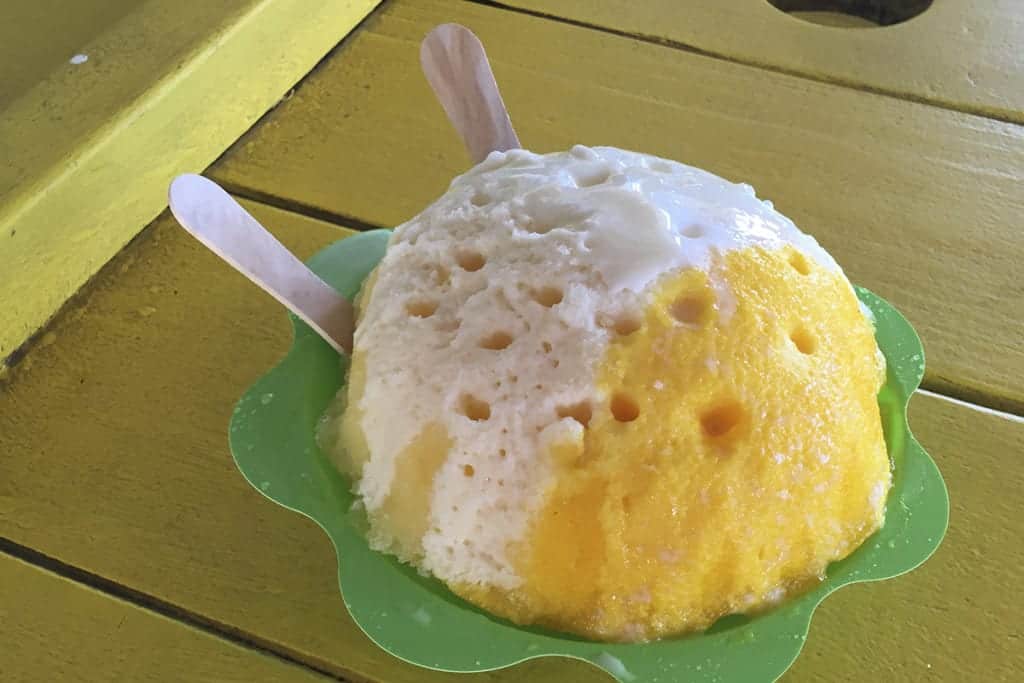
From breathtaking tropical beauty to endless beach possibilities, Hawaii seems to have it all. But other than the daily sunbathing and the unlimited rounds of pina colada, Hawaii also has something sweet and delightful to offer to locals and tourists- Hawaiian shave ice.
Hawaii has Japan to thank for their delectable treat as the Hawaiian shaved ice was brought to the region by Japanese plantation workers back in the 1900’s and is considered a descendant of the kakigori. Originally intended to provide relief to plantation laborers during the hot summer season, the Hawaiian shaved ice later became ubiquitous in Hawaii.
The Hawaiian shaved ice is quite similar to the kakigori in terms of texture and flavoring. As more shaved ice stands sprung open, the dessert became even more popular.
While variants with artificial flavorings are almost everywhere, contemporary restaurants and stalls now offer new variants, which feature locally-harvested fruits such as passion fruit, lychee, kiwi, mango, pineapple, and guava.
A unique feature of Hawaiian shave ice is that it’s often served with an ice cream scoop at the bottom of the ice.
Thailand’s Nam Kang Sai
An elaborate treat for street food lovers with a sweet tooth, the nam kang sai is all about flavor and simplicity. Like many of the places on our list, Thailand can be a very humid place and few things help cool you down like a bowl of sweetened ice can.
Take a trip to Thailand and you’ll see this popular dessert being sold nearly everywhere you go, from malls to street vendors, to high end restaurants. Just like China’s bao bing, the nam kang sai is overloaded with toppings that are both healthy and refreshing.
Most vendors use an ice-shaving machine to create a smooth, sorbet-like shaved ice. Once ready, they bathe the shaved ice with either coconut milk or a red syrup, which is known as sala syrup. They then finish it off with a variety of toppings that include water chestnut, jackfruit, sweet corn, taro, and bread cubes. A sweet treat on the street? A big “yes” to that!
Taiwan’s Xue Hua Bing
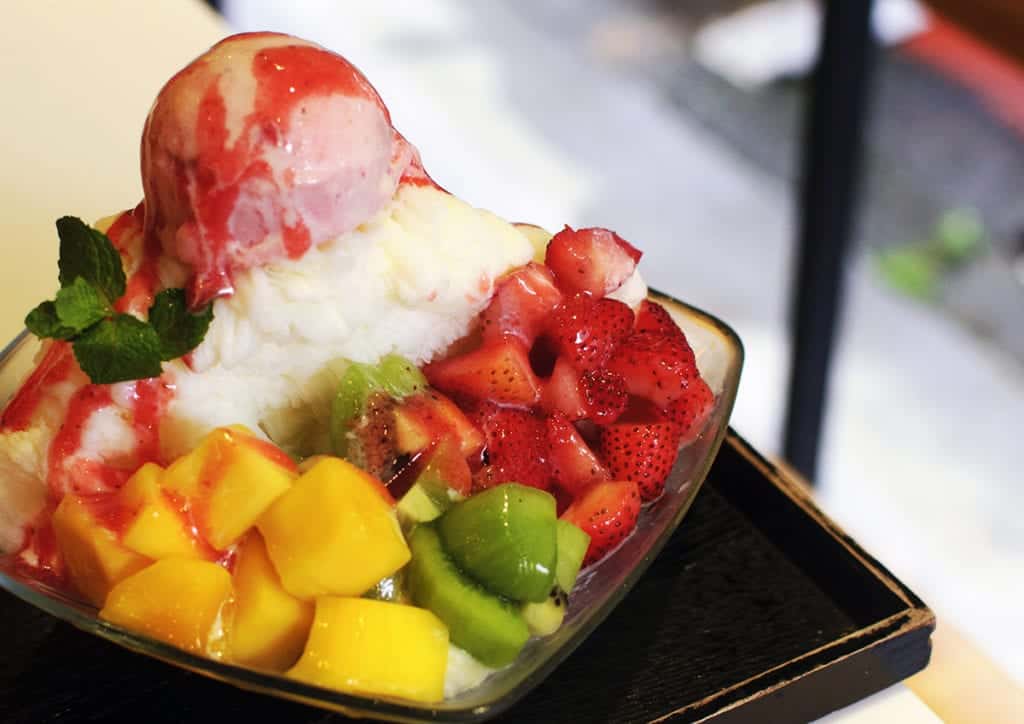
Taiwan answers back to the scorching summer heat with its very own xue hua bing- a local crowd favorite that’s well known internationally as well. This shaved ice version is not just your ordinary dessert as it is made with a distinct shaving technique. Its unique texture is further enhanced by its creamy base, which goes from fruit purees to green tea to just about anything under the sun.
Xue hua bing is a bit different from many of the other ice-desserts featured here, because it’s made from freezing sweetened milk and other flavors such as green tea, mango. This frozen mix is then shaved on a standard ice block shaving machine. In this way, the flavor is actually inside the ice itself, instead of being applied after.
The sumptuous surprise doesn’t stop there as the xue hua bing is also topped with additional syrups and a mix of toppings and ingredients such as grass jelly, red bean paste, fresh fruit, mochi, and condensed milk. Even better news: Taiwan’s xue hua bing allows dessert enthusiasts to be experimental as they can add other ingredients in their liking.
Xue hua bing has been growing steadily in popularity in the United States over the years, and has also served as the inspiration for new desserts like shaved ice cream.
India’s Gola
Also known as “chuski,” gola is a local dessert sold by vendors in India. Unlike other shaved ice variants, gola features a coarse texture and is served with a popsicle stick. Interestingly, the popular flavorings used for preparing gola include kala khatta (a mixture of cumin and blackberry), rose or mango.
While mango is already a typical topping for other shaved ice variants, you don’t get to see a kala khatta or rose-flavored dessert every day, right? After being mounted in a cup, the gola is then shaped in a stick, making it quite similar to a popsicle–another feature that makes India’s gola stand out.
Aside from being a popular refreshment in India, Gola is also served in Pakistan, where it is known to locals as the gola ganda.
South Korea’s Patbingsu
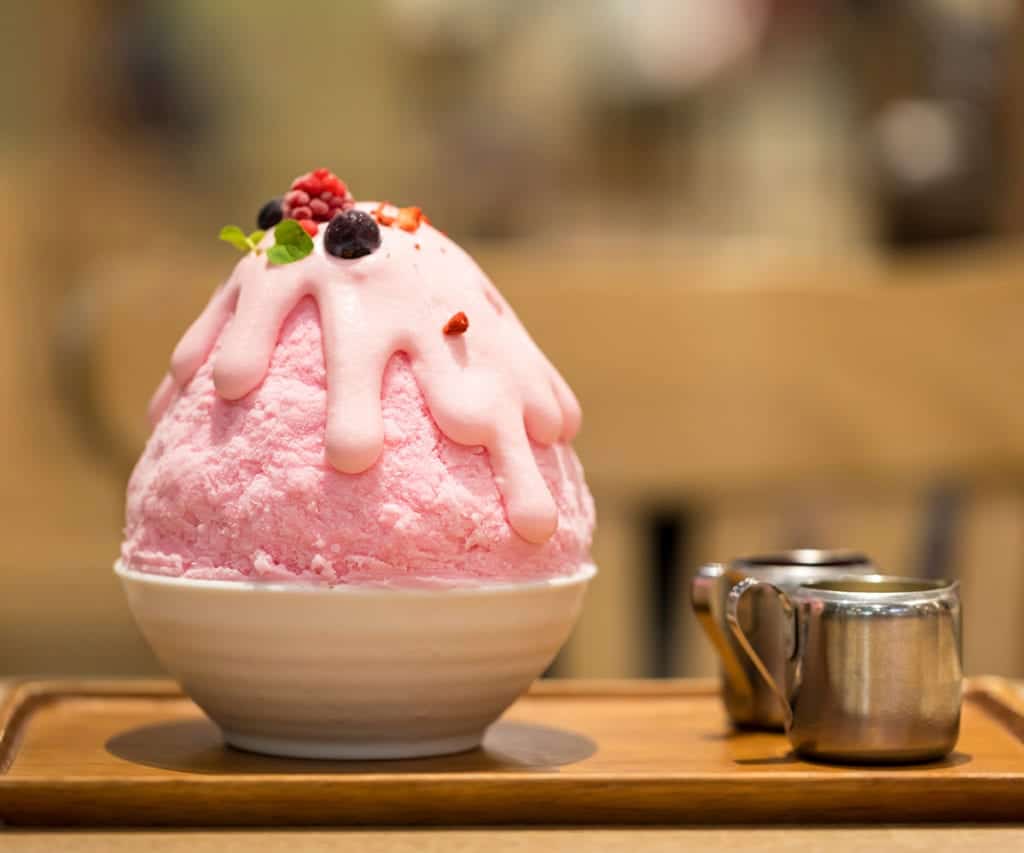
It’s no surprise that South Korea’s patbingsu quickly made a grand entrance in the culinary world as it combines unique qualities of shaved ice variants in other Asian regions. Also known as “bingsu,” the patbingsu is like a fusion of the Japanese kakigori and the Chinese bao bing.
Its snowy texture resembles the kakigori, but instead of bathing the ice with syrups and other flavorings, this Korean dessert elevates senses with ingredients that are similar to that of the bao bing’s.
Popular ingredients known to the patbingsu include condensed milk, sweet red beans, fruits, rice cakes, and in some variants, an ice cream scoop. Just like the halo-halo, patbingsu is best mixed before consumption.
If you’ve got a K Town in your city, you’ve got to try Patbingsu.
Puerto Rico’s Piragua
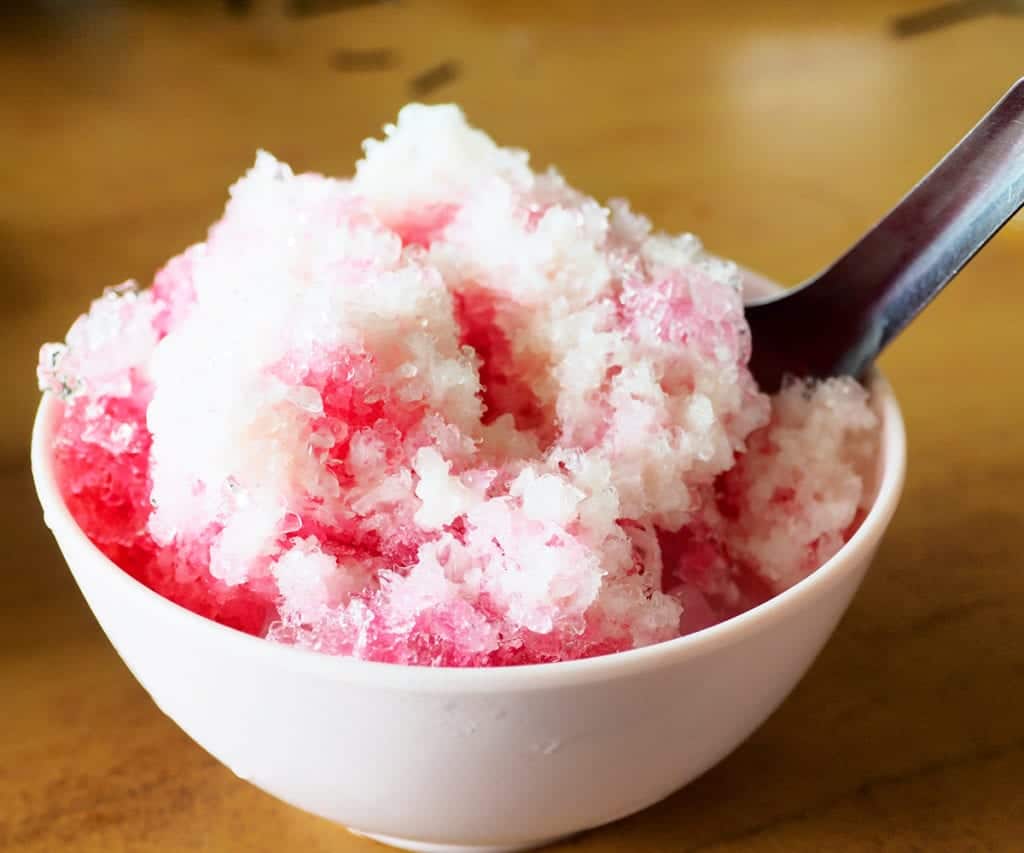
Coarser than the kakigori but no less enticing, Puerto Rico’s piragua is an all-time summer favorite. Besides Puerto Rico, Piragua can also often be found in Florida, New York, and in other parts of the U.S. with large Puerto Rican populations.
Unlike other shaved ice variants that use high-end machinery, the piragua is a labor of sweat and love as it is typically hand-scraped by vendors. After manually shaving the ice, it is shaped into a pyramid and coated with flavored syrup.
Most variants are topped with pineapple, passion fruit, melon, coconut, and tamarind, making it a five-star dessert for fruit lovers who are looking for a refreshing treat, minus the guilt. For those who like it extra sweet, the piragua is also available in iterations that are topped with condensed milk and dulce de leche.
Malaysia’s Ais Kacang
A dessert that’s all about bold colors, texture and flavors? Malaysia hits the nail hard on the head with its shaved ice version, the ais kacang. Also known as “ABC” (a shortened term for “air batu campur”), the ais kacang means “ice beans,” which is a fitting description of this delicious dessert. The ais kacang is consistent in terms of texture as it is traditionally made with an ice shaving machine. Since the ice itself is shaved to perfection, every bowl is filled with snow-like ice that offers the best refreshment.
The vibrant colors of the ais kacang are due to layers of mouth-watering ingredients that usually include palm seed, sweet corn, agar agar cubes, toasted peanuts, durian, nata de coco (coconut gel), and grass jelly. The preparation of this dessert ends with a drizzle of condensed milk or coconut milk. Since the ais kacang has also developed over time, chocolate-flavored variants are now available in the market.
Peru’s and Bolivia’s Shikashika
Ever wondered how glacier ice taste like? Shikashika, which is popular in both Peru and Bolivia, can offer you a taste of the mountains. The process of getting and creating ice blocks may be difficult, but this is exactly what made the shikashika extra special. After collecting and transporting the ice blocks, local vendors shave the ice and glaze it with milk, honey or flavored syrup.
The Ice Unites Us All
Feel like giving one of these a try? It’s pretty much guaranteed that you’ll be the hero of the next hot day if you start handing out any of these icy masterpieces. With a few ingredients here and there, you are all set to create the best dessert ever!
References:
- https://en.wikipedia.org/wiki/Kakig%C5%8Dri
- https://en.wikipedia.org/wiki/Granita
- https://www.nytimes.com/1989/06/07/garden/the-americanization-of-bao-bing-a-cool-fruity-asian-treat.html
- https://recipes.howstuffworks.com/food-facts/bao-bing-sweet-treat-survived-for-centuries.htm
- https://www.hawaiianshavedice.com/shaved-ice-recipes-from-around-the-world.html
- https://edition.cnn.com/travel/article/world-50-best-desserts/index.html
- https://backpackerlee.wordpress.com/2016/02/08/what-is-asias-best-shaved-ice-dessert/
- https://www.eater.com/2018/5/24/17376180/shave-ice-shaved-ice-kakigori-dessert-bao-bing-halo-halo

